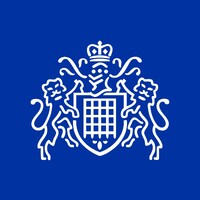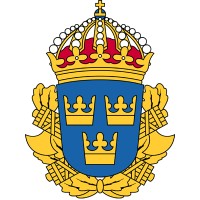Company Details
government-of-india
23,010
179,181
92212
svpnpa.gov.in
0
GOV_1276452
In-progress

Government of India Company CyberSecurity Posture
svpnpa.gov.inhe Government of India, officially known as the Union Government, and also known as the Central Government, was established by the Constitution of India, and is the governing authority of a union of 28 states and seven union territories, collectively called the Republic of India. It is seated in New Delhi, the capital of India. The government comprises three branches: the executive, the legislative and the judiciary. The executive branch headed by the President, who is the Head of State and exercises his or her power directly or through officers subordinate to him.[1] The Legislative branch or the Parliament consists of the lower house, the Lok Sabha, and the upper house, the Rajya Sabha, as well as the president. The Judicial branch has the Supreme Court at its apex, 21 High Courts, and numerous civil, criminal and family courts at the district level. The basic civil and criminal laws governing the citizens of India are set down in major parliamentary legislation, such as the Civil Procedure Code, the Indian Penal Code, and the Criminal Procedure Code. The union and individual state governments consist of executive, legislative and judicial branches. The legal system as applicable to the federal and individual state governments is based on the English Common and Statutory Law. India accepts International Court of Justice jurisdiction with several reservations.
Company Details
government-of-india
23,010
179,181
92212
svpnpa.gov.in
0
GOV_1276452
In-progress
Between 750 and 799

 GI Global Score (TPRM)
GI Global Score (TPRM)XXXX



No incidents recorded for Government of India in 2025.
No incidents recorded for Government of India in 2025.
No incidents recorded for Government of India in 2025.
GI cyber incidents detection timeline including parent company and subsidiaries

he Government of India, officially known as the Union Government, and also known as the Central Government, was established by the Constitution of India, and is the governing authority of a union of 28 states and seven union territories, collectively called the Republic of India. It is seated in New Delhi, the capital of India. The government comprises three branches: the executive, the legislative and the judiciary. The executive branch headed by the President, who is the Head of State and exercises his or her power directly or through officers subordinate to him.[1] The Legislative branch or the Parliament consists of the lower house, the Lok Sabha, and the upper house, the Rajya Sabha, as well as the president. The Judicial branch has the Supreme Court at its apex, 21 High Courts, and numerous civil, criminal and family courts at the district level. The basic civil and criminal laws governing the citizens of India are set down in major parliamentary legislation, such as the Civil Procedure Code, the Indian Penal Code, and the Criminal Procedure Code. The union and individual state governments consist of executive, legislative and judicial branches. The legal system as applicable to the federal and individual state governments is based on the English Common and Statutory Law. India accepts International Court of Justice jurisdiction with several reservations.


The Metropolitan Police Service is famed around the world and has a unique place in the history of policing. Our headquarters at New Scotland Yard - and its iconic revolving sign - has provided the backdrop to some of the most high profile and complex law enforcement investigations the world has e

The FBI Virtual Academy is the portal to all FBI training opportunities offered to our external partners. FBI Virtual Academy registration is open to all personnel serving in any agency within the criminal justice or intelligence community – including state, local, tribal, and international law enfo

Politiemensen staan midden in de maatschappij, dicht op het nieuws. De politie is daar waar het gebeurt. Het optreden van agenten ligt altijd onder een vergrootglas. Bij de politie ben je 24 uur per dag en voor iedereen in onze diverse samenleving. Integer, moedig, betrouwbaar en verbindend zijn daa

Welcome to the Official NYPD LinkedIn Page. For emergencies, dial 911. To submit crime tips & information, visit www.NYPDcrimestoppers.com or call 800-577-TIPS. The mission of the New York City Police Department is to enhance the quality of life in New York City by working in partnership with the c

Gendarmería Nacional Argentina (GNA) es una Fuerza de Seguridad de naturaleza militar, que cumple funciones en la seguridad interior, defensa nacional, auxilio a la Justicia Federal y apoyo a la Política Exterior de la RA. Es una de las cuatro Fuerzas que integran el Ministerio de Seguridad de l

The Singapore Police Force (SPF) is a uniformed organisation under the purview of the Ministry of Home Affairs. The mission of the SPF is to prevent, deter and detect crime to ensure the safety and security of Singapore. The Singapore Police Force’s official LinkedIn page should NOT be used for

Policing in South Africa. I am attached to the newly formed Directorate for Priority Crime Investigations. Formally I was attached to the Detecitve Service and have been conduction investigations for over 25 years. I have also been attached to the National Inspectorate Division of the SAPS for soem

Vi gör hela Sverige tryggt och säkert! Att arbeta inom polisen är ett av de finaste uppdrag man kan ha. Du bidrar till samhället genom att göra hela Sverige tryggt och säkert. Oavsett om du jobbar i en civil roll eller som polis, är möjligheterna att växa med en större uppgift många. Vi är Sverig
.png)
Cyber security refers to technologies, processes, and rules created to protect computer systems, servers, networks, programs, and data from cyber-attacks.
India's cybersecurity sector has expanded significantly, now hosting over 400 startups and approximately 6.5 lakh professionals across...
Director General of Indian Computer Emergency Response Team CERT-In, Dr. Sanjay Bahl, has said India's Cybersecurity Ecosystem scaled new...
Mandatory SIM Verification: Every telecom operator must now ensure strict verification of SIM cards and user identities to prevent misuse. ·...
Chief minister Mohan Charan Majhi on Saturday launched a month-long statewide cybersecurity awareness campaign amid a sharp rise in...
By Prof Triveni Singh, Ex-IPS: The Indian government's recent notification dated September 27 on the roles of its various ministries and...
The Indian Navy on Thursday organised a high-level seminar on “Impact of Cyber Attacks on Maritime Sector and Its Effects on National...
Tech News News: The Cybersecurity Information Sharing Act (CISA 2015), vital for cyber threat coordination between government and private...
India's digital public infrastructure (DPI) journey involved addressing critical security and privacy challenges, providing lessons for...

Explore insights on cybersecurity incidents, risk posture, and Rankiteo's assessments.
The official website of Government of India is http://www.svpnpa.gov.in.
According to Rankiteo, Government of India’s AI-generated cybersecurity score is 789, reflecting their Fair security posture.
According to Rankiteo, Government of India currently holds 0 security badges, indicating that no recognized compliance certifications are currently verified for the organization.
According to Rankiteo, Government of India is not certified under SOC 2 Type 1.
According to Rankiteo, Government of India does not hold a SOC 2 Type 2 certification.
According to Rankiteo, Government of India is not listed as GDPR compliant.
According to Rankiteo, Government of India does not currently maintain PCI DSS compliance.
According to Rankiteo, Government of India is not compliant with HIPAA regulations.
According to Rankiteo,Government of India is not certified under ISO 27001, indicating the absence of a formally recognized information security management framework.
Government of India operates primarily in the Law Enforcement industry.
Government of India employs approximately 23,010 people worldwide.
Government of India presently has no subsidiaries across any sectors.
Government of India’s official LinkedIn profile has approximately 179,181 followers.
Government of India is classified under the NAICS code 92212, which corresponds to Police Protection.
No, Government of India does not have a profile on Crunchbase.
Yes, Government of India maintains an official LinkedIn profile, which is actively utilized for branding and talent engagement, which can be accessed here: https://www.linkedin.com/company/government-of-india.
As of November 28, 2025, Rankiteo reports that Government of India has not experienced any cybersecurity incidents.
Government of India has an estimated 1,471 peer or competitor companies worldwide.
Total Incidents: According to Rankiteo, Government of India has faced 0 incidents in the past.
Incident Types: The types of cybersecurity incidents that have occurred include .
.png)
Angular is a development platform for building mobile and desktop web applications using TypeScript/JavaScript and other languages. Prior to versions 19.2.16, 20.3.14, and 21.0.1, there is a XSRF token leakage via protocol-relative URLs in angular HTTP clients. The vulnerability is a Credential Leak by App Logic that leads to the unauthorized disclosure of the Cross-Site Request Forgery (XSRF) token to an attacker-controlled domain. Angular's HttpClient has a built-in XSRF protection mechanism that works by checking if a request URL starts with a protocol (http:// or https://) to determine if it is cross-origin. If the URL starts with protocol-relative URL (//), it is incorrectly treated as a same-origin request, and the XSRF token is automatically added to the X-XSRF-TOKEN header. This issue has been patched in versions 19.2.16, 20.3.14, and 21.0.1. A workaround for this issue involves avoiding using protocol-relative URLs (URLs starting with //) in HttpClient requests. All backend communication URLs should be hardcoded as relative paths (starting with a single /) or fully qualified, trusted absolute URLs.
Forge (also called `node-forge`) is a native implementation of Transport Layer Security in JavaScript. An Uncontrolled Recursion vulnerability in node-forge versions 1.3.1 and below enables remote, unauthenticated attackers to craft deep ASN.1 structures that trigger unbounded recursive parsing. This leads to a Denial-of-Service (DoS) via stack exhaustion when parsing untrusted DER inputs. This issue has been patched in version 1.3.2.
Forge (also called `node-forge`) is a native implementation of Transport Layer Security in JavaScript. An Integer Overflow vulnerability in node-forge versions 1.3.1 and below enables remote, unauthenticated attackers to craft ASN.1 structures containing OIDs with oversized arcs. These arcs may be decoded as smaller, trusted OIDs due to 32-bit bitwise truncation, enabling the bypass of downstream OID-based security decisions. This issue has been patched in version 1.3.2.
Suricata is a network IDS, IPS and NSM engine developed by the OISF (Open Information Security Foundation) and the Suricata community. Prior to versions 7.0.13 and 8.0.2, working with large buffers in Lua scripts can lead to a stack overflow. Users of Lua rules and output scripts may be affected when working with large buffers. This includes a rule passing a large buffer to a Lua script. This issue has been patched in versions 7.0.13 and 8.0.2. A workaround for this issue involves disabling Lua rules and output scripts, or making sure limits, such as stream.depth.reassembly and HTTP response body limits (response-body-limit), are set to less than half the stack size.
Suricata is a network IDS, IPS and NSM engine developed by the OISF (Open Information Security Foundation) and the Suricata community. In versions from 8.0.0 to before 8.0.2, a NULL dereference can occur when the entropy keyword is used in conjunction with base64_data. This issue has been patched in version 8.0.2. A workaround involves disabling rules that use entropy in conjunction with base64_data.

Get company history
















Every week, Rankiteo analyzes billions of signals to give organizations a sharper, faster view of emerging risks. With deeper, more actionable intelligence at their fingertips, security teams can outpace threat actors, respond instantly to Zero-Day attacks, and dramatically shrink their risk exposure window.
Identify exposed access points, detect misconfigured SSL certificates, and uncover vulnerabilities across the network infrastructure.
Gain visibility into the software components used within an organization to detect vulnerabilities, manage risk, and ensure supply chain security.
Monitor and manage all IT assets and their configurations to ensure accurate, real-time visibility across the company's technology environment.
Leverage real-time insights on active threats, malware campaigns, and emerging vulnerabilities to proactively defend against evolving cyberattacks.




